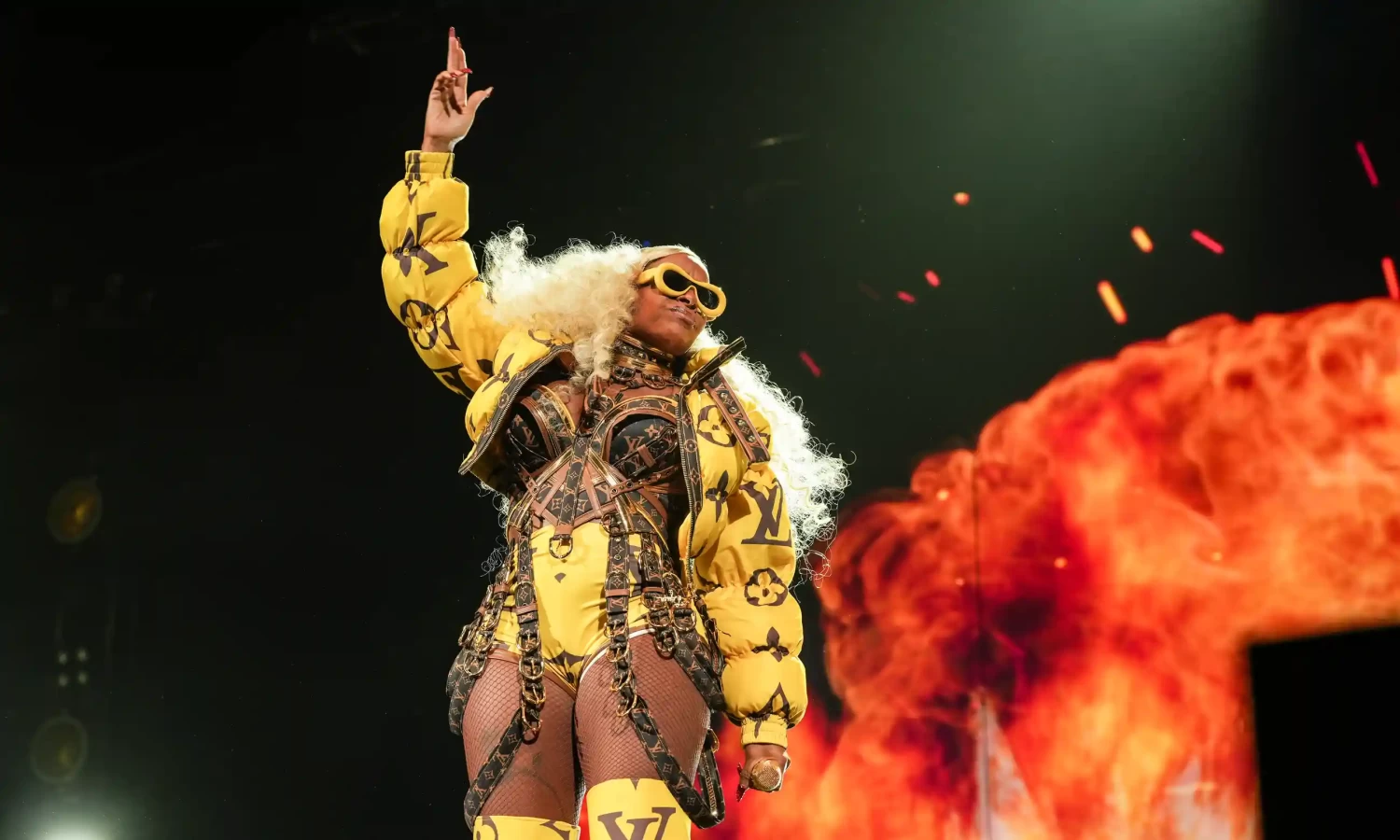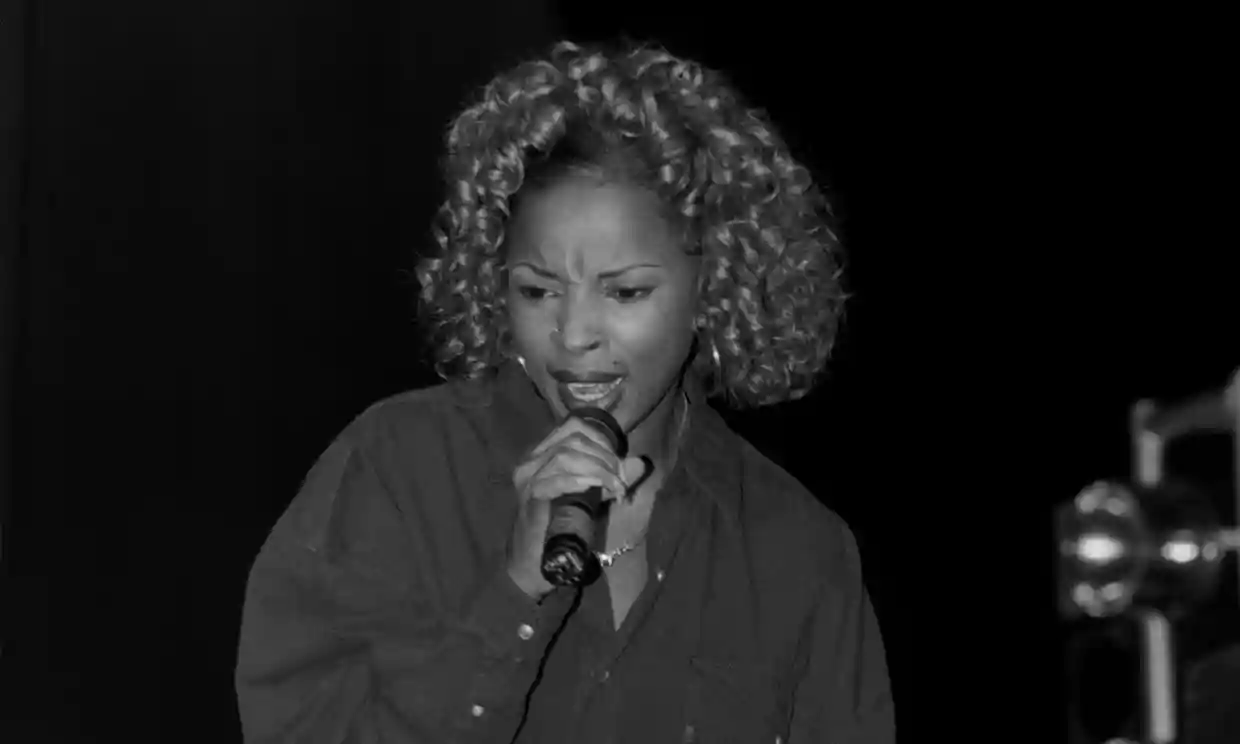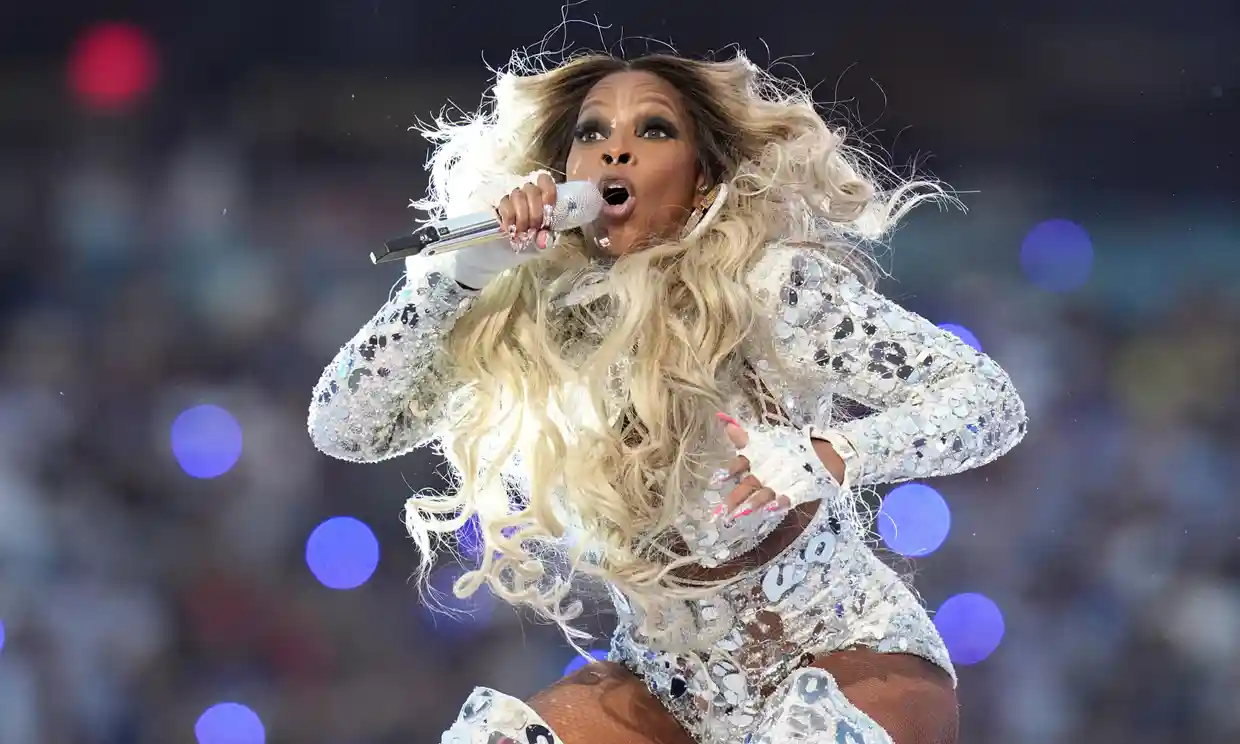
This article is more than
2 year oldMary J Blige: the era-defining R&B original is back on imperial form – and primed for Grammys success

- lige redrew the map in the 90s, combining hip-hop and soul, before her life and chart fortunes took a tumble. But after the Super Bowl and a creative return-to-form, she’s back on top
- Grammy awards 2023: who will win – and who should?
n 2015, Mary J Blige performed at Glastonbury. She appeared on the Friday afternoon during a rainstorm so relentless that the TV coverage was frequently blurred by water on the camera lens, innocuously sandwiched between Alabama Shakes and a wheezy-sounding Motörhead on their last legs. It was a relatively lowly billing for an artist with 100m sales to their name, but the sight of an R&B artist on the Pyramid stage still carried the tang of novelty – it was the year someone got up a petition protesting Kanye West’s headlining appearance as “an insult to rock music” – and, moreover, Blige’s career was, by her standards at least, on its uppers.
The imperial phase that had begun with the release of her 1992 debut What’s the 411? had drawn to a close as the 00s turned into the 2010s. The previous year, she had released The London Sessions, a game attempt to pair her up with a series of UK artists: Disclosure, Sam Smith, Emeli Sandé, Naughty Boy. The results were OK, but the concept smacked of an artist casting around for a new direction – and the fact that the British artists got billing on the album cover seemed to say something about Blige’s diminished stature: it was being marketed as much on their presence as hers. It proved the lowest-selling album of her career.
Under the circumstances, you could have forgiven Blige for phoning it in. Instead, she unleashed a performance of scarcely believable power and ferocity. If you haven’t seen it, search out the BBC footage of her doing her 2001 single No More Drama (unbelievably, it isn’t available on any official platforms). Midway through, she fixes on the words “no more”, singing them again and again: screaming, howling, her voice dropping to a sob, then defiantly rising – apparently completely consumed by a song she must have performed hundreds of times. By its conclusion, Blige was crouched at the front of the stage being lashed by the rain. The crowd response was so loud and so long that Blige implored them to stop – “y’all are gonna make me cry”. For a moment it looked like she was going to break down. Instead, she tore into Family Affair, arguably her greatest single and a song entirely at odds with its predecessor.
Onstage at Glastonbury, Blige did not look much like an artist prepared to quietly accept diminished circumstances. And so it has proven. She begins 2023 with her most recent album, Good Morning Gorgeous, garlanded with six Grammy nominations, including record of the year and album of the year. Last year, her Super Bowl halftime performance succeeded in stealing the show from her co-stars Dr Dre, Eminem, Snoop Dogg, 50 Cent and Kendrick Lamar. Clad in an outfit emblazoned with 10,000 Swarovski crystals, she gave a reading of No More Drama only marginally less intense than at Glastonbury, the highlight of a show that subsequently won an Emmy. Her US tour grossed $34m. She launched her own festival in Atlanta, announced the arrival of her own talk show, The Wine Down, and won Billboard’s Icon award. Google revealed she was the year’s second-most searched music artist in the US, behind Maroon 5’s scandal-hit frontman Adam Levine. In truth, her career began picking up not long after Glastonbury – her 2017 album Strength of a Woman, was her highest-charting in eight years; the following year, her performance in the period drama Mudbound saw her nominated for an Oscar and a Golden Globe – but the sense of a dramatic increase in momentum over the last 12 months is hard to miss.
Perhaps we shouldn’t be surprised at Blige’s resurgence: she was a scrapper from the start. She fought her way out of a horrendous childhood in Yonkers’ Schlobohm Housing Projects – domestic violence, sexual abuse, an alcoholic, PTSD-stricken Vietnam vet father who left the family a few years after her birth – to release a debut album that literally changed the face of pop music. It’s not an exaggeration to say that we still live in a musical world that What’s the 411? helped create. Responding to what he called the “raspy, gutter, ghetto pain” of her voice, not to mention the toughness of her upbringing – Blige has a scar on her face that she has consistently refused to discuss – producer Sean Coombs set it to music explicitly influenced by hip-hop.

The sound proved so pervasive, in time essentially consuming the entire genre of R&B, that it’s hard to imagine how striking it sounded on arrival, in an era where female-fronted R&B hits still tended to the soft-hued and poppy: Shanice’s I Love Your Smile, Vanessa Williams’ Save the Best ’Til Last or Mariah Carey’s Let It Go. It wasn’t just the forward-thinking sound that stuck out but the raw, gripping potency of Blige’s voice. For all her hip-hop-inspired image, it seemed to key into a much older soul tradition that the 80s had done its best to try and eradicate from the mainstream: a point Blige would underline some years later, on 1999’s Mary, a classicist soul-inspired album that pointed up the blues and gospel elements of her vocals.
While What’s the 411? sold 3m copies in the US alone, Blige became embroiled in a troubled relationship with singer Cedric “K-Ci” Hailey. A nadir of public humiliation was reached when she appeared live on The Word, and, having suggested the pair were engaged, was shown a video of Hailey on the same show loudly denying their engagement, although clearly worse was going on behind closed doors: Blige subsequently accused him of physical abuse. Her drinking escalated and she became addicted to cocaine. By the recording of her second album, My Life, she said she was suicidal. The musical results were astonishing: one of the landmark R&B albums of the decade, the largely self-written record offered an unsparing, wrenching document of a life in torment, “down and out, crying every day”, as she put it on the title track. It was often heavy emotional terrain – even the closing Be Happy is only cautiously optimistic at best – that introduced the notion of Blige as latter day R&B’s equivalent of a confessional singer-songwriter: her travails so public that Blige the person and Blige the artist seemed indivisible. Thereafter, she seldom shied away from a lyric that other artists might have rejected as too blunt: “I don’t have a lot of friends,” she sang on 1999’s Deep Inside. “Is it cash they see when they look at me?”
Harrowing or not, My Life was another hit, as was the album after it, and the album after that. Her quality control seemed to start wobbling around the turn of the millennium, although, initially at least, her commercial dominance did not – her 2006 single Be Without You spent 15 weeks at the top of Billboard’s Hot R&B Hip-Hop Songs chart. By the 2010s however, there were signs of trouble: an advert she made for Burger King was criticised as racist, there were issues with the IRS, her albums no longer went multi-platinum, the title of 2011’s My Life II suggested an artist casting back to their former glories.

So what’s behind her resurgence? The prosaic answer is that 2017’s Strength of a Woman and Good Morning Gorgeous are better albums than those that immediately proceeded them. Some of it is probably down to prevalent trend for 90s and early 00s nostalgia – the appearance of Kendrick Lamar notwithstanding, that was certainly what the Super Bowl half-time show was ultimately founded in, with its performances of Still Dre, In Da Club, California Love and Lose Yourself.
But there’s also a peculiar dichotomy to Blige. On one hand, she seems a very modern pop star. Current pop music prizes relatability, and Blige’s music was always relatable: “I’m every young girl in every hood,” as she once put it. It’s not so much that she’s continually approached by fans in the 2021 documentary My Life, it’s that every single one of them wants to tell her how her songs reflected their own experiences, whether divorce, abuse or coming out. We also live in an era where we expect artists to collaborate far beyond their genre, and Blige always did that, too: her voice was far more adaptable than the “gutter, ghetto pain” assessment suggested, and she seemed every bit as comfortable and imperious collaborating with U2, George Michael, Elton John or the Rolling Stones (footage of a 2012 live performance of Gimme Shelter with the latter offers a gripping glimpse of Blige in old-fashioned blues wailing mode) as with Method Man and Jay-Z.
But in another sense, she kicks against modern standards, not least the wearying desire for perfection, where artists are Auto-Tuned, choreographed, Photoshopped and media-trained to within an inch of their lives. It’s a climate that makes the Blige who was, as one writer put it, “opinionated to the point of abrasiveness”, who interrupted an interview with Veronica Webb to offer the model-turned-journalist outside for a fight (the latter happened after her management had sent her on a 17-week etiquette course), a strangely appealing, unvarnished character. Meanwhile, as David Dundas, who designed her Super Bowl outfit, noted, Blige is hard to choreograph onstage because “her movements are impulsive … some artists plan every step but Mary reacts in the moment”.
“There’s no time for pretty girl shit,” Blige once said of her stagecraft. “It’s time for ugly faces, sweat, spit flying – you got to get it going on.”
Whatever the reason, Blige’s resurgence is a hugely pleasing state of affairs: an abundantly talented, genuine musical pioneer having the full glare of the spotlight returned to them and clearly relishing it. “If you never seen me, or never met me, or you never went to any of my shows, you know exactly who I am after Super Bowl,” she said last year. “I’m super proud of myself. And I never thought I’d ever be able to say that in my lifetime.”